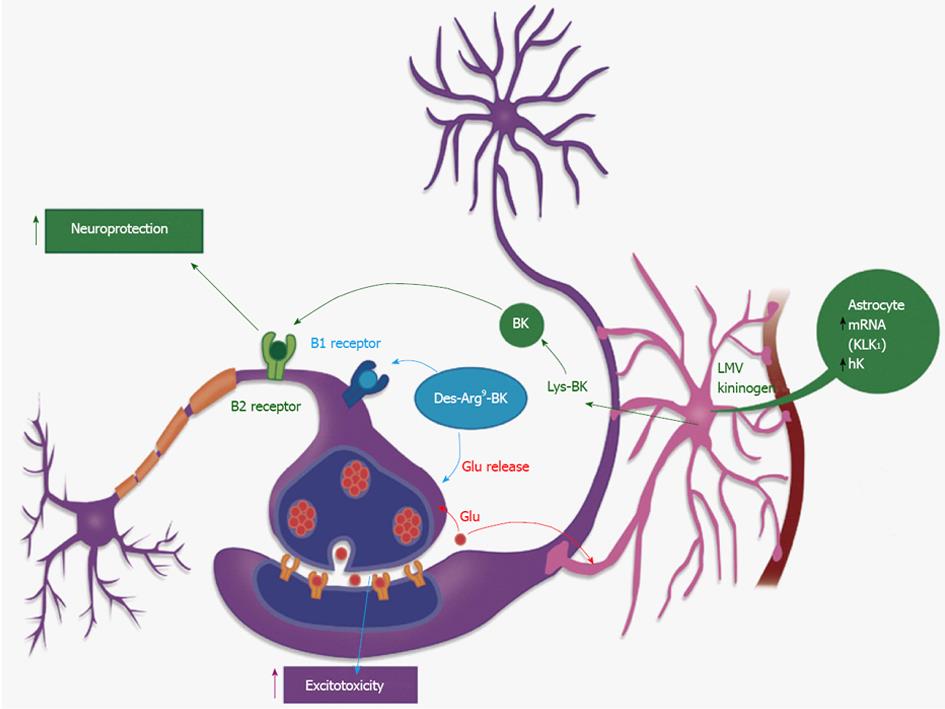Copyright
©2014 Baishideng Publishing Group Inc.
World J Biol Chem. May 26, 2014; 5(2): 130-140
Published online May 26, 2014. doi: 10.4331/wjbc.v5.i2.130
Published online May 26, 2014. doi: 10.4331/wjbc.v5.i2.130
Figure 2 Cross-talk between glial and neural cells related to the kallikrein-kinin system.
An adaptation based on the image found at the following site: http://learn.genetics.utah.edu/units/addiction/reward/images/neuronsAstrocyte.jpg. Kallikrein 1 (KK1) in the hippocampus, acts on its main substrate, the low molecular weight kininogen, to release Lys-bradykinin (BK) which can be hydrolyzed to BK, Des-Arg9BK or des-Arg10-Lys-BK by kininases, localized in astrocytes or at the extracellular matrix. These short-living peptides will act on the neuronal surface: binding to kinin B1R they will induce an increase in glutamate release, thus increasing neuronal excitability. Acting on kinin B2R these peptides will produce neuroprotection[42-45].
- Citation: Naffah-Mazzacoratti MDG, Gouveia TLF, Simões PSR, Perosa SR. What have we learned about the kallikrein-kinin and renin-angiotensin systems in neurological disorders? World J Biol Chem 2014; 5(2): 130-140
- URL: https://www.wjgnet.com/1949-8454/full/v5/i2/130.htm
- DOI: https://dx.doi.org/10.4331/wjbc.v5.i2.130









